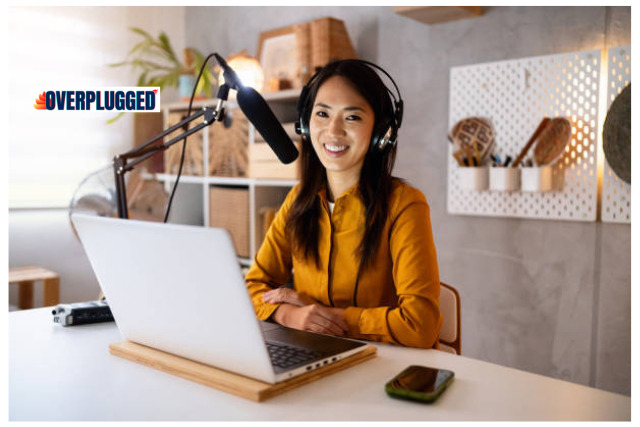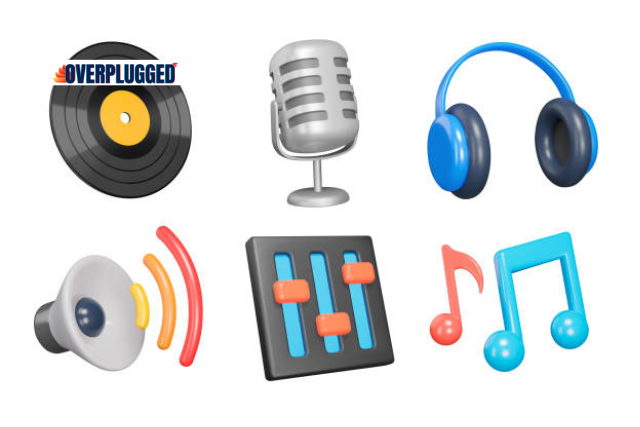How to Improve Your Podcast Recording Sound Quality Better| Easy Podcast Setup

Nowadays, podcasting is popular in the global world. Podcasting is also playing a very important role in our lives. So, that is normal in issues with the sound quality of podcasting.
That’s why I’m coming here to help you. No need to worry! In this article, I’ll cover how to improve your podcast recording sound quality better.
To make your podcast sound better, start with a good microphone for clear talking. Record in a quiet place to avoid extra noise. After recording, use tools to adjust the volume and remove any unwanted sounds.
Moreover, try different settings to make your voice sound just the way you like it. These easy tips can make your podcast sound great to people who listen.
Contents
- 1 How To Improve Your Podcast Recording Sound Quality Better?
- 2 Know Your Podcast Recording Environment: Studio Recording vs. Recording Remote Guests
- 3 Podcast Recording in a Home Studio_ You Need to Know
- 4 Recording Guests Remotely
- 5 Create a Podcast Studio With the Right Podcast Recording Equipment:
- 6 How Microphone Technique Can Improve Your Podcast Sound Quality
- 7 Get Better Podcast Sound Quality With Equipment Upgrades
- 8 10 Tips for Improving Podcast Sound Quality Better| Simple Guide
- 9 Frequently Asked Questions
- 10 At Last Words
How To Improve Your Podcast Recording Sound Quality Better?

Firstly, if your podcast doesn’t sound good, even the most interesting stuff won’t keep people listening. People tend to leave if they can’t hear things clearly, so it’s important to make sure your audio is top-notch.
There are many things you can do to improve your podcast sound quality. It starts with getting a good microphone and using the right podcast recording software.
Know Your Podcast Recording Environment: Studio Recording vs. Recording Remote Guests
Are you planning to record in a home studio, or will you be talking to guests and co-hosts from different places? Where you record affects the kind of equipment and software you need for pro-level podcast sound.
So, understanding your recording space and using the right remote recording tools will make your podcast sound better.
Podcast Recording in a Home Studio_ You Need to Know

Setting up your podcast at home is a smart way to save money and keep things budget-friendly. With a few adjustments to your home studio, you can improve the sound of your podcast without breaking the bank.
Create a Dedicated Space for Podcasting:
Just like you might have a designated home office, create a specific spot for recording your podcast. Pick a quiet room where you can control noise levels and eliminate background sounds.
Ideally, turn a whole room into your studio so you can keep your podcast recording equipment set up all the time. In this way, you can avoid constantly moving your microphone and setting it up.
It’s a simple way to save time on editing your podcast audio files later on.
Why Does Acoustics Matter for Podcasts?
Think of sound like light bouncing off surfaces. Hard, flat surfaces can make sound bounce around, and sensitive microphones can pick up these echoes.
When setting up your recording area, think about acoustics to avoid these unwanted echoes.
Here’s a simple test: stand in your recording space and snap your fingers or clap your hands. Listen for echoes.
A carpeted room with furniture can help reduce these echoes. Couches, curtains, and soft surfaces absorb sound, preventing it from bouncing off walls and floors.
You can also use affordable noise-canceling panels to eliminate echoes around your podcast equipment.
How Much Space Do You Need for Your Podcast?
Consider the physical space for your podcast studio. If you have co-hosts or guests, make sure there’s enough room for everyone and all your podcast gear.
For a more advanced setup, you’ll need space for microphones, mic stands, an audio mixer, a computer, and all the connecting cords. Having ample space allows you to experiment with microphone placement, which we’ll talk about later.
Recording Guests Remotely
In case your podcast involves remote recording with co-hosts or guests, invest in good remote recording software. This is crucial for capturing high-quality audio.
Find a quiet space with good acoustics, even if you’re recording from a distance. Quality remote recording software offers features that make achieving professional-sounding podcast audio easier.
Before you grab podcast recording software, check if it has these features to boost your podcast sound quality:
Live Monitoring:
Adjust your podcast sound quality on the go. Hearing your recording as you speak allows you to tweak microphone position, gain, and volume, reducing the need for extensive editing.
Local Recording:
Local recording directly on your computer ensures stable podcast sound quality, supporting larger, uncompressed files for better audio.
Double-Ender Recording:
Maintain audio consistency. Good remote recording software includes double-ender recording, capturing your audio and your co-hosts’ simultaneously for balanced volume levels and less reliance on external audio submissions.
Exporting Podcast Audio Files:
Choose the right format. Opt for uncompressed audio files for better quality and increased control during the editing process.
Now, let’s talk about enhancing your podcast sound quality by setting up the right podcast recording equipment.
Create a Podcast Studio With the Right Podcast Recording Equipment:

Investing in quality equipment improves your podcast sound instantly. Whether you’re a seasoned podcaster or just starting, putting money into your setup pays off for better audio quality.
Let’s explore vital podcast recording equipment and how to use them effectively.
Use the Right Microphone to Record Your Podcast:
Spend a bit more for better sound. Quality microphones elevate your podcast sound. Understanding microphone polar patterns helps you choose the right one:
Cardioid Microphones:
Record sound directly in front, ideal for podcasts, minimizing background noise for multiple hosts in the same space.
Omnidirectional Microphones:
Pick up sound from all directions, better for music than spoken podcasts. If background noise is an issue, consider switching to a cardioid mic.
Figure-8 Microphones:
Capture sound in front and behind, less practical for podcasting. Avoid these if upgrading your microphone for improved podcast audio.
XLR Microphones vs. USB Microphones:
Choose the right connection between XLR Vs. USB Microphones. USB mics offer versatility, plugging directly into a computer. However, for improved podcast audio quality, consider XLR mics, providing a higher-quality recording with balanced sound and additional control.
Condenser Mics vs. Dynamic Mics:
Understand the polar pattern. Dynamic mics with cardioid patterns work well for podcasts, blocking unwanted sounds. If reducing background noise is a priority, consider switching to a dynamic mic from a condenser mic with omnidirectional patterns.
Investing wisely in your podcast setup, including quality microphones and understanding their features, significantly enhances your podcast sound quality.
How Microphone Technique Can Improve Your Podcast Sound Quality
Improving your podcast sound quality goes beyond just having a good microphone – it’s about mastering microphone techniques. Here are four easy-to-understand elements to focus on:
Mic Level:
Adjust your mic’s input levels properly. Too much gain can lead to clipping, while too little may introduce hissing.
Utilize an audio mixer to set correct gain levels by speaking into the mic and adjusting until you see peaks in the -10dB range on your meter.
Proximity:
Experiment with how close you sit to your microphone. Closer picks up more low-frequency signals, providing a warm sound.
Finding a balance is crucial – too close may capture unwanted noise, while too far introduces echoes. Begin with your microphone about four finger-widths away, aiming for a conversational tone.
Mic Angle:
Play with the angle of your mic to understand its sensitivity. On-axis (directly in front) captures high-frequency content for a bright sound. Off-axis (slightly to the side) can reduce plosives and high-frequency interference.
Experiment with both to find the best quality, considering a pop filter for on-axis recording.
Voice Level:
Speak at a consistent level to maintain a balanced recording. Avoid extremes like shouting or whispering to prevent reverb and interference from other mics.
However, if speaking loudly, step back to disperse sound pressure; if quiet, lean closer for better clarity.
Get Better Podcast Sound Quality With Equipment Upgrades
Here are some better podcasting sound quality tools.
Audio Mixers and Interfaces:
- Gain control over EQ, volume, and more with an audio mixer. Upgrading to an advanced model offers features like separate compression adjustment for multiple audio tracks.
Pop Filter:
- Clip a pop filter to your mic stand to reduce unwanted pops and crackles caused by bursts of air. Check if your microphone already has a built-in pop filter.
Microphone Stand and Shock Mount:
- Invest in a good stand and shock mount to minimize extra noise during recording, such as a microphone sliding across the table.
Headphones:
- Choose comfortable headphones with minimal noise bleed. Excessive noise bleed can be picked up by the microphone, impacting your recording quality.
By understanding these techniques and upgrading your equipment, you’ll be on your way to achieving professional-sounding audio for your podcast.
10 Tips for Improving Podcast Sound Quality Better| Simple Guide
Here are some simple 10 tips for improving your podcast sound quality better: Also, read these 10 tips for growing a successful podcast audience.
- Use good recording software that lets you record in 48 kHz.
- Find a quiet room for recording to avoid background noises.
- Soundproof your space as much as possible.
- Download your audio separately for better control during editing.
- Wear headphones while recording to monitor your audio quality.
- Choose the right microphone, with XLR and dynamic options generally being better.
- Experiment with the angle of your microphone for optimal sound.
- Consider using an audio mixer or interface for volume and gain control.
- Download uncompressed WAV audio files for higher quality and flexibility in editing.
- Use software that supports local recording if you’re recording remotely.
Frequently Asked Questions
How do I make my podcast sound better?
- Get a good microphone for clearer voice recording.
- Record in a quiet place to avoid background noise.
- Use editing tools to adjust volume and remove unwanted sounds.
- Experiment with different recording software for better results.
What is a good audio bitrate for the podcast?
Podcasts with talk-predominant content should have a bitrate between 96 and 128 kbps. Sample rate: 44.1 kHz.
Are there tips for recording podcasts at home?
- Designate a quiet space for recording to minimize disturbances.
- Experiment with microphone placement for better sound quality.
- Use soundproofing measures to reduce unwanted noise.
- Keep your recording setup consistent for more reliable results.
Why does my podcast sound muffled?
The first thing you should do is listen to a section of your podcast and listen for the compressor. Your compression settings might be too high if you hear muffled or pulled-back voices.
At Last Words
In conclusion, understanding your recording environment and investing in the right podcast equipment can significantly improve your podcast sound. Knowing how to position your microphone can make a big difference in the audio quality. So, try different setups and placements to find the best way to achieve a professional sound for your podcast.
